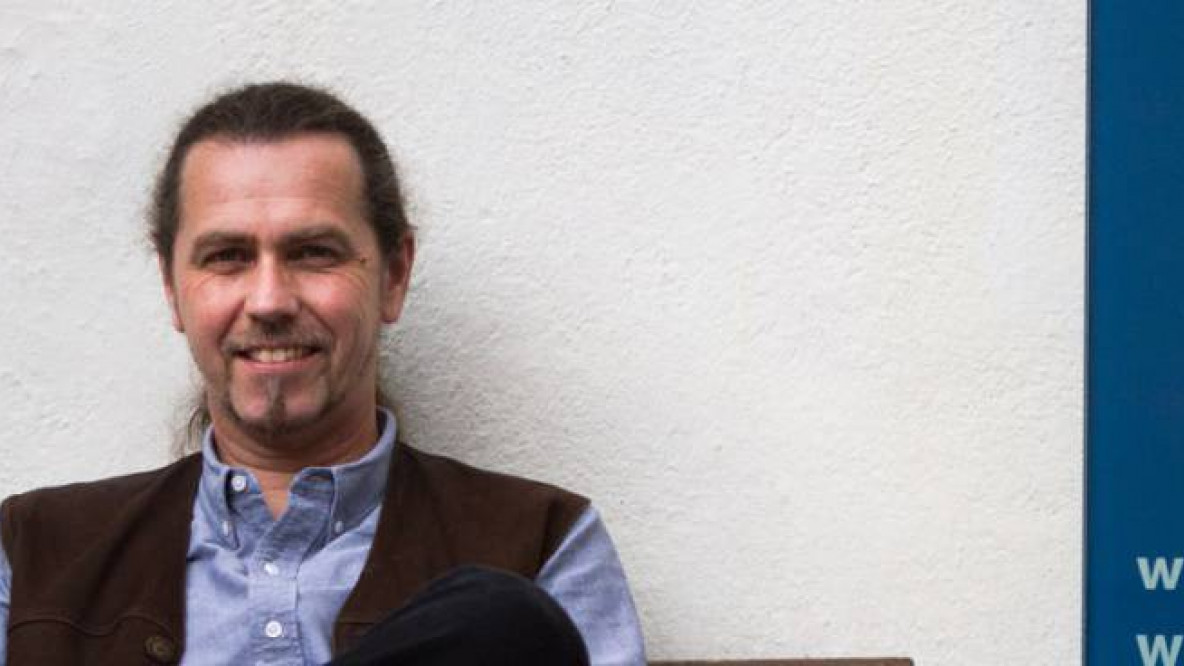The burning function

Andreas Hamel is a laid back math professor at the Free University of Bolzano. Very passionate about his research projects on Optimization Theory, but far away from the stereotypical introvert mathematician. As the UniBz can count on a high rate of international academic personnel (around 30%), Professor Hamel is no exception. After completing his diploma and PhD at the University of Halle-Wittenberg in native Germany, he moved to Rio de Janeiro in Brazil, then Princeton and New York in the USA for research and teaching. But that’s not the interesting part of the story. The reason why Hamel is famed to be a great professor among the students who attended his classes is the way he teaches math.
According to him, mathematics textbooks packed with theorems are hard to digest simply because they answer questions never asked. Given the context and a good dose of curiosity, difficult concepts can be easily grasped because those answers will eventually make sense – if one learns about the questions. In the framework of a 3-years project supported by the EU Commission, Prof. Hamel gathered ideas to develop a brand new method of teaching mathematics to university students. He has employed this method in the design of a new math course that he has then taught at Princeton and that turned out to be pretty satisfying. Both in 2007 and 2008, in fact, he has been enlisted among the professors recognized for outstanding teaching.
Practically, Prof. Hamel encourages his students to talk to each other and makes them feel comfortable with the new topic in order to let them overcome the initial confusion mathematics can instill. Once, he conducted a class project in which a new concept was presented to students on huge sheets of paper. «This is called support function», he recalls having said. «I’m going to explain what it is and give you an example of its application, then I’ll leave the classroom for 15 minutes, so you can to talk about it to each other and explain it to me upon my return». After 15 minutes he returned in the class and was fairly well explained by them what a support function is. «Students who talk to each other and to the professor gain access to a much deeper knowledge that is harder to forget». But sometimes even talking to each other can be challenging when it has to be done in a foreign language. In fact, the “Mathematics for Economists” course Hamel teaches in Brunico is in English. And despite English being a common ground for everyone, occasionally he is asked explanations in German. And, of course, he agrees. As long as those who asked will translate it into Italian as well.
«People are usually scared when it comes to learn mathematics because they don’t know what to do with it, it is too abstract for immediate practical use». To get through this misconception, Hamel uses mathematical theorems on juggling to make the learning process easier and funnier. The aim is to translate something as abstract as C=2πr into something as fascinating as the circular trail of a fireball soaring through the air. Linking the graph of a function to a juggling pattern, according to the professor, eases its comprehension since it is translated into something one can do with her/his hands.
The fun of dexterity tricks, though, is not only used as teaching mean, it also serves as a marketing tool. Is there a better opportunity to bring together the local community and 40 “strange” mathematicians than a photographic contest featuring jugglers with burning ropes? Not according to Hamel that though to exploit it to raise awareness around the conference “Set Optimization meets Finance” he is organizing for the 8-12 September at the Brunico campus.
Had enough? Hamel hasn’t. He also teaches Argentine tango. A rapid word-of-mouth in the hallways of the university about his 10 years as a tango dancer resolved in an list of 20 students eager to learn also how to dance from prof Hamel that in response taught them 6 classes. But because dancing is much more physical than mathematics, the rules had to be strict: at 8pm in classroom 6, Prof. Hamel is Andreas, no more than 3 dances per couple are allowed «and everything that happens in this room during tango classes, stays in this room». This served not only to loosen up the atmosphere but also to guarantee that the approach to math classes suffered no differences, he explains. Finally, when asked what brought him to Brunico, Hamel confessed that, as the time for his two toddlers to start school has come, he and his family decided to settle here where he used to hike 15 years ago. Therefore, hopefully for math students, he will stick around at UniBz for a while.
